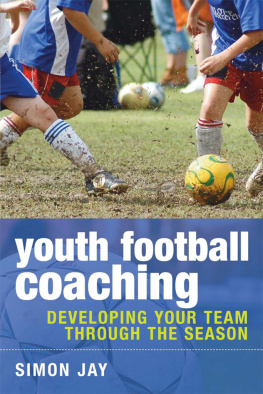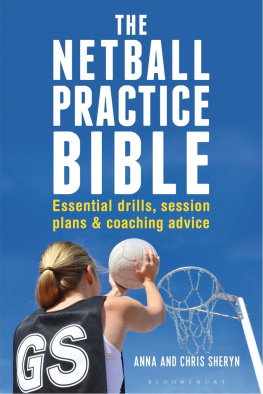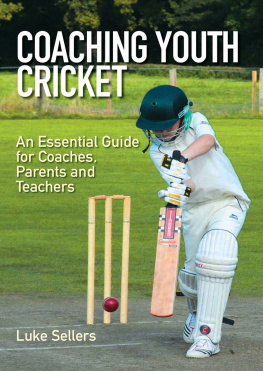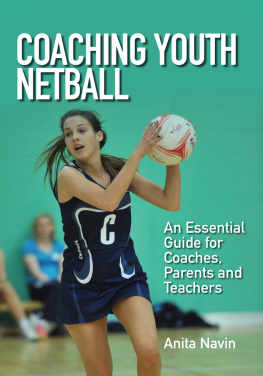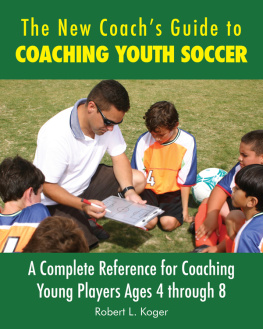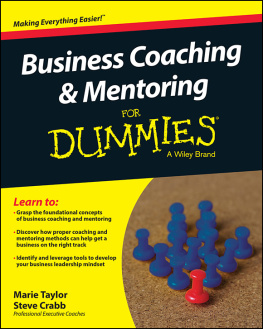
Note
While every effort has been made to ensure that the content of this book is as technically accurate and as sound as possible, neither the author nor the publishers can accept responsibility for any injury or loss sustained as a result of the use of this material.
This electronic edition published 2015
Bloomsbury Publishing Plc,
50 Bedford Square, London WC1B 3DP
Copyright 2009 Simon Jay
ISBN 978-1-4081-1055-3
ePUB ISBN 978-1-4729-0248-1
All rights reserved
You may not copy, distribute, transmit, reproduce or otherwise make available this publication (or any part of it) in any form, or by any means (including without limitation electronic, digital, optical, mechanical, photocopying, printing, recording or otherwise), without the prior written permission of the publisher. Any person who does any unauthorised act in relation to this publication may be liable to criminal prosecution and civil claims for damages.
Simon Jay has asserted his right under the Copyright, Design and Patents Act, 1988, to be identified as the author of this work.
A CIP catalogue record for this book is available from the British Library.
Acknowledgements
Cover photograph Shutterstock.com
Inside photographs Simon Jay
Design James Watson
Illustrations Jeff Edwards
Editor Lucy Beevor
To find out more about our authors and books visit www.bloomsbury.com. Here you will find extracts, author interviews, details of forthcoming events and the option to sign up for our newsletters.
Contents
Key: TP technical practice, SP skills practice, FP functional practice, PoP phase of play, SSG small-sided game
Introduction
Many people who coach or manage football teams have got into the role due to their own love of the game and their desire to help children improve their playing skills. Often they know what they want to achieve but are not equipped with the tools to meet their goals.
This book has been written to help coaches, parents or teachers working with 11-a-side soccer teams maximise both the time and effectiveness of their training sessions. The aim is to explain the reasons for, and benefits of, analysing team performance in matches, using this analysis to set a flexible training strategy based over the course of a season and allowing them to work on areas that need strengthening in a cohesive and structured manner. A comprehensive range of coaching session plans are included within the book that a coach can use to fulfil their strategy and these are explained in detail to enable the coach to deliver a fun and professional training session to their team. These session plans are broken down into:
technical sessions working on a players individual technique;
functional sessions for a small group of players within a particular part of the team;
phases of play working on the team as a whole;
small-sided games working on team strategy and structure.
Delivering these sorts of sessions can be daunting but the book will explain different coaching methods, terminology used, and how to deliver a comprehensive warmup and cool-down before and after each session or game.
To ensure that this strategy is continuously focusing on the best needs of the team, the book will also explain how to monitor the effectiveness of the plan and how to adapt the strategy if necessary either for short-term periods to work on one particular area, or over a longer period to rework existing areas that still require attention.
While it is important to set a cohesive strategy and deliver quality training sessions, the coach should also know how to evaluate their own performance and this book will provide the tools for effectively assessing the delivery of a session and how it could be refined or improved when given in the future.
Finally, it is essential that everyone involved with the team knows what is required of them and this book will provide templates for player and parent codes of conduct, an overview of best practice for Child Protection, and how to recognise and deal with issues of child abuse and bullying.
The key aim is that this book will become an essential tool for coaches, parents and teachers to help them plan and deliver professional, structured training sessions, enabling their players to meet their full potential and to play at the highest level of football possible.
part one
stop shouting, start coaching
Why and how do you carry out a match assessment?
Whenever we watch a game of football, we always remember the contentious or memorable events. Everyone has an opinion on what occurred and why and, for a coach or manager, emotions, team or player expectations or personal experience can influence how they analyse these key events. How often have you heard a parent extolling the virtues of their child and their influence on the game yet you have viewed things quite differently?
As a coach, you need to be aware of this potential for bias in your own analysis of a players or a teams performance and adopt practices that allow you to consider the game objectively. It is as important to remember why a goal was not scored as it is to remember why one was scored, or how the opposition won the ball in their own half and then missed a scoring chance, rather than remembering a mistake in your penalty area that led to a goal. Should you be planning your coaching sessions to remedy missing chances or to improve taking chances? Do you work on removing individual mistakes in the penalty area that may not happen that frequently, or on ball retention in the oppositions half and team structure if the ball is lost?
Research into what a coach observes in a game shows that less than 40 per cent of what happens prior to the goal is remembered and this decreases to less than 20 per cent for events other than goals (missed chances, poor passes, offside etc). Coaches will better remember events that involve their own team or players than those of the opposition and they will remember the events towards the end of each half rather than trends in the middle of the halves. This will set the tone for their subsequent analysis of the game.
So picture this scenario: your team has just won 4-3; your striker scored a great hat trick and missed a couple of other chances, you had two shots that hit the post and towards the end of the game the opposition pressed hard for the win, but you defended well and your keeper pulled off a couple of great saves to secure the win.
Or consider this: you have just won 4-3; your striker had better pace than the tall defenders and scored a hat-trick, however he was also through on goal on another three occasions and made the wrong decision. Frequently your midfield hit the ball long for the striker to run on to, but the ball kept going straight through to their keeper. Your other striker hit the post twice when he should have finished. The ball was frequently given up in midfield and they scored from two of these occasions. Finally, towards the end of the game, you kept hitting the ball long from the back; this was easily dealt with by the big, tall defenders who kept playing the ball back into your danger areas and this led to another goal. Only two great saves from the keeper secured you the win.
Based on the second scenario, you might plan to work on a series of sessions that start with transitioning from defence to attack, playing the ball out from the back, creating space in midfield, creative play in the final third and, finally, finishing skills. This could be done over a four or five week period and would work in a systematic manner on all the areas you have analysed as needing attention during your 4-3 win.

